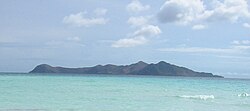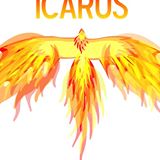Letters-Vox Populi: MANILA- YOUNG BLOOD- The language that built Palawan By: Duke Xander M. Campilan, 16, studies at San Beda College Alabang
The language that built Palawan
My grandmother once told me: “Beken kaw Palaweño kong indi ka kaelam aglimeg i’ Cuyonon (You cannot call yourself a Palaweño if you cannot speak Cuyonon).”

As far back as I can remember, my grandmother always had a peculiar accent when she spoke. Her pitch was fast, and she always seemed to stress every last syllable of a word. Even when speaking Tagalog, she’d utter words like, “katre,” “lomboy,” “kay” and “walâ” in place of “kama” (bed), “duhat” (java plum), “kasi” (because), and “hindi” (not).
.
ADS by Cloud 9:
.
– SPACE RESERVE FOR YOUR ADVERTISEMENT –
.
.
About two years ago, during one of our summer homecomings to Palawan, I overheard a crowd of tourists native to Manila (my hunch) getting all excited about their vacation. This conjured up memories of the azure El Nido skies and its emerald islands I had enjoyed years and years ago.
I was also reminded of my trip to Bali, where I saw how Balinese culture permeated every aspect of the way of life of the island: from the architecture, which paid homage to its Hindu origins yet also possessed a native beauty, to the clothing, the colorful sarongs and regal headdresses that adorned Balinese dancers, the greenery across the land, and the people whose hospitality could only be matched by the Filipinos’ own.
Everywhere I went in that island of ancient gods, the scent of incense always seemed to trail me. I was enthralled by the culture and how it attracted travelers from all over the world.
.
ADS by Cloud 9:
.
– SPACE RESERVE FOR YOUR ADVERTISEMENT –
.
.
My thoughts then drifted back to my hometown of Palawan, the natural beauty of which would frankly trump Bali tenfold, but whose culture remained largely underappreciated—even by me.
While on a steep and narrow road to Bali’s Tegalalang rice terraces, I asked our driver what language was spoken in Bali. He told me they spoke Balinese, though Indonesian was the language they would use to communicate to non-Balinese Indonesians. It then occurred to me that the visual culture I was witnessing was, in fact, encapsulated in the native tongue—Balinese words expressing Balinese concepts and beliefs.
It made me wonder: What language do the Palaweños speak? Tagalog was what I always knew and heard. So how is the Palaweño distinct from the Manileño, or the Caviteño, or the Batangueño, if all spoke the same language? I consulted my grandmother, whom I always considered “living history.” And that’s what she told me: “Beken kaw Palaweño kong indi ka kaelam aglimeg i’ Cuyonon (You cannot call yourself a Palaweño if you cannot speak Cuyonon).”
My grandmother, who moved to mainland Palawan from Cuyo during the early half of the last century, is only one of the thousands upon thousands of Cuyonons who sought a new future in the country’s last frontier.
.
ADS by Cloud 9:
.
– SPACE RESERVE FOR YOUR ADVERTISEMENT –
.
They settled and formed new towns such as El Nido, Taytay, Coron and Puerto Princesa, among others. They lived with the indigenous Tagbanwa, often resulting in intermarriage; they also brought Christianity and farming techniques along with them. In other words, they sowed the seeds to the Palawan we know today.
With their migration, they also brought their language and culture with them. That old culture was representative of Palawan for most of the last two centuries, when the local government used Cuyonon and people from all classes spoke
Cuyonon with one another.
.
ADS by Cloud 9:
.
– SPACE RESERVE FOR YOUR ADVERTISEMENT –
.
.
However, much has changed from that time. Today, Cuyonon is seen as the language of the barrio while the more prestigious Tagalog has risen in use, causing the decline in our native language that continues to the present.
Ashamed of being blind to the plight of the Cuyonon language and culture for so long, I began a yearlong effort to become fluent in it.
My mother never learned Cuyonon because my grandmother never passed it down to her, so I had to contact every Cuyonon language and culture preservation advocate to gain sources and references in learning the language. The fruits of my labor have been sweet nonetheless, and now I can speak Cuyonon with fluency and ease. I am beginning to write in the language, too.
I am well aware that my efforts may not be able to stop the decline of Cuyonon, but with the collective efforts of all Cuyonons, the trend can be certainly reversed. I hope Palaweños will come to realize that, aside from our turquoise waters, white sand beaches, emerald forests, golden fields and and radiant corals, Palawan’s greatest beauty lies in its soul and culture — ig maman ang bisarang Cuyonon (and that is the Cuyonon language).
* * *
Duke Xander M. Campilan, 16, studies at San Beda College Alabang
TRIVIA:
Barangays
Cuyo is politically subdivided into 17 barangays. In 1956, sitio Danawan was elevated into a barrio.[6]
History
Oriental traders were early discoverers of the Cuyo group of islands and introduced barter trading with the locals.
Later, the Malay chief Matuod and his people arrived in big boats called sakayan and formed settlements on Cuyo. The Islamic chieftain Datu Magbanua later also settled on Cuyo, later consolidating his power so that chieftains from other islands recognized his rule. The Malays brought with them their dances, and when blended with native dance, the “Soriano”, it became known as the “pondo-pondo” one of the most popular folk dances even up to the present.
During the rule of Datu Magbanua, three Chinese arrived on the island and settled also on Cuyo. The Chinese discovered gold deposits in Mount Aguado and introduced gold mining, smith working, pottery, and other handicrafts. The natives of Cuyo became suspicious of their presence and later expelled them. They sailed to Ilongilong (today known as Iloilo) and formed another settlement called Parián.
In 1622, the Conde de San Agustín, together with five Spanish missionaries, colonised the island they named Cuyo. The friendly character of the people proved to be a blessing to the Spaniards, who found it easy converting the native population to Catholicism. They immediately baptised some 500 inhabitants, however, many still regarded their indigenous Cuyonon religion as sacred and continued to perform Cuyonon rituals. The supreme deity of the Cuyunon people was Diwata ng Kagubatan (literally goddess of the forest), who was honored in a celebrated feast, periodically held atop of Mount Caimana in Cuyo Island. When most of the natives were converted to Christianity during the Spanish Era, about 2/3 of the converted Cuyunon were still celebrating her feast, angering the Spanish imperialists. The situation led the Spanish authorities to intensify their evangelization and governance efforts, which included the forced Roman Catholic conversion of the Cuyonon people, burning of houses of non-Catholic Cuyonons, and massive slavery. Later, the Spanish called Diwata ng Kagubatan as Virgen Del Monte, in another bid to rebrand the deity as ‘Catholic’.
In 1636, a powerful fleet under the Muslim Datu Tagul raided Cuyo and other places in Palawan. In Cuyo, the Muslims attacked the church and clergy house. They set the town on fire and took with them prisoners including a priest, Fr. Francisco de Jesús María. They then sailed to Agutaya and Culion, where they pillaged and attacked defenceless civilians. The raiders abducted another priest from Culion, Fr. Alonzo de San Agustín, as he was saying Mass. A Spanish naval flotilla of six vessels and 250 men under Captain Nicolas Gonzáles met the returning pirates with their loot and booty on December 21, 1636. Datu Tagul was killed, 300 of his men captured, and 120 prisoners were freed. The two captured priests were killed.
In 1957, the following sitios were converted to barrios: Emilod and Balading.
|
Cuyo
|
||
|---|---|---|
| Municipality of Cuyo | ||

Manamoc Island
|
||
|
||
|
Cuyo
Location within the Philippines
|
||
| Coordinates: 10°51′N 121°01′ECoordinates: 10°51′N 121°01′E | ||
| Country | ||
| Region | Mimaropa (Region IV-B) | |
| Province | Palawan | |
| District | 1st district | |
| Barangays | 17 (see Barangays) | |
| Government | ||
| • Type | Sangguniang Bayan | |
| • Mayor | Andrew L. Ong | |
| • Electorate | 12,622 voters (2016) | |
| Area | ||
| • Total | 84.95 km2 (32.80 sq mi) | |
| Population
(2015 census)
|
||
| • Total | 22,360 | |
| • Density | 260/km2 (680/sq mi) | |
| Time zone | UTC+8 (PST) | |
| ZIP code |
5318
|
|
| PSGC | ||
| IDD : area code | +63 (0)48 | |
| Climate type | Tropical climate | |
| Income class | 4th municipal income class | |
| Revenue (₱) | 82.1 million (2016) | |
| Native languages | Cuyonon Palawano language Tagalog |
|
| Website | www |
|
ADS by Cloud 9:
.
– SPACE RESERVE FOR YOUR ADVERTISEMENT –
.
.
.
 All photographs, news, editorials, opinions, information, data, others have been taken from the Internet ..aseanews.net | [email protected] | For comments, Email to : Icarus d’ Greek | [email protected] | – Contributor
All photographs, news, editorials, opinions, information, data, others have been taken from the Internet ..aseanews.net | [email protected] | For comments, Email to : Icarus d’ Greek | [email protected] | – Contributor











